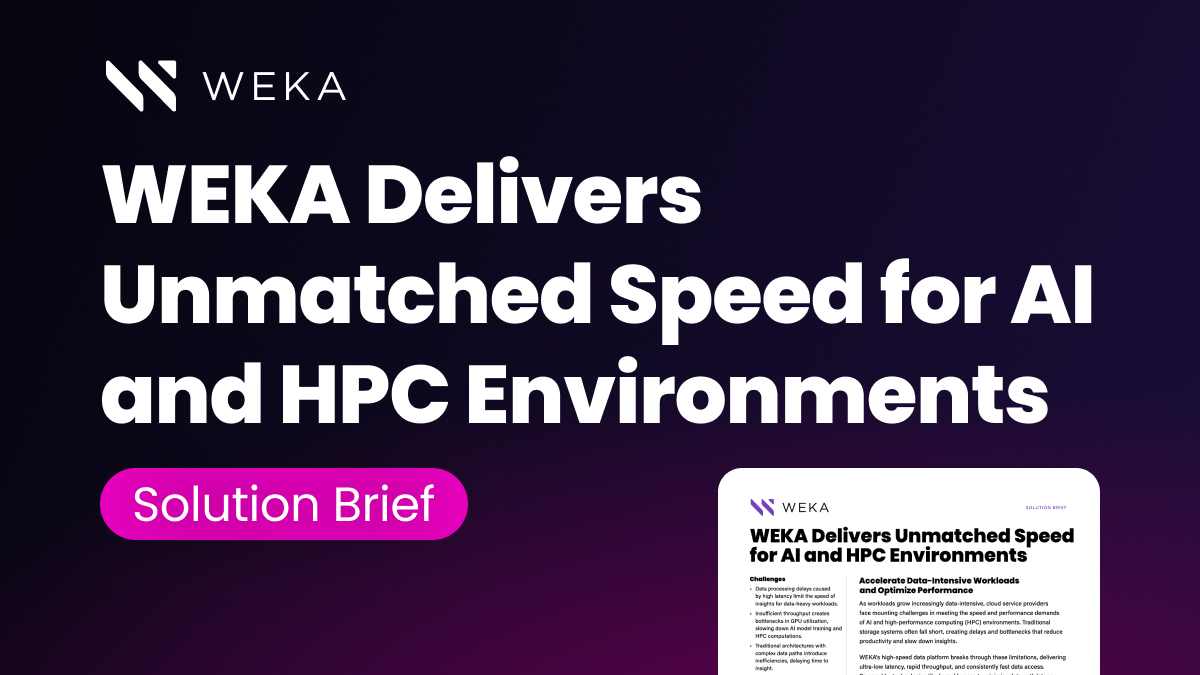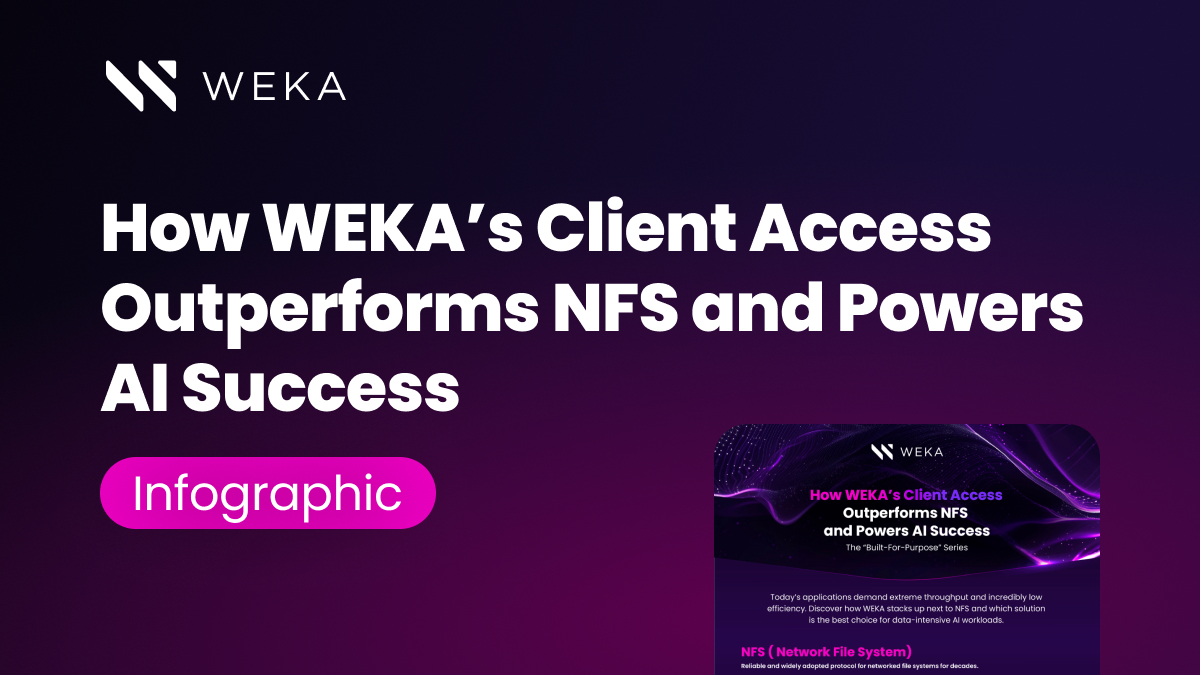What is Multi-Cloud Storage? Everything You Need To Know

Curious about multi-cloud storage? We explain what multi-cloud storage is and its benefits and discuss challenges and ways to overcome them.
What is multi-cloud storage? Multi-cloud storage merges the services of more than one cloud storage vendor into one architecture. Multi-cloud storage can increase data protection and flexibility but also bring challenges such as data integration and security.
What is Multi-Cloud?
Cloud infrastructure (or simply “the cloud”) is a collection of distributed processing and storage resources connected through software and network hardware functioning as a combined, high-performance, and highly-available computing system. Cloud platforms provide organizations with massive storage and processing powers far beyond on-prem supercomputers or workstations.
The trade-off is that cloud systems require significant planning and careful implementation–which is why many organizations work with service providers to deploy and manage cloud resources.
Generally speaking, we can break down cloud systems into four basic categories:
- Public: Public cloud is most often what we think of when discussing “the cloud.” Users share public cloud resources–individual users will have instances of cloud architecture that are separated from others but will share access to hardware and resources. This allows public cloud infrastructure to be flexible and scalable, cheaper, but less responsive or secure than its private counterpart.
- Private: Unlike public cloud services, private cloud is self-contained, where users share no resources. Often, private cloud resources are on-prem, held privately by an organization. More and more providers, however, are looking to offer hosted private solutions for security-conscious organizations. Private clouds aren’t cheap, however, nor do they scale as well as public environments.
- Hybrid: Hybrid environments combine both public and private services for organizations. The private resources often serve as stable and secure environments for mission-critical operations, while the public resources handle large-scale processing and scaling demands at cost.
- Multi-Cloud: Multi-Cloud systems are somewhat like hybrid systems. However, rather than being composed of public and private cloud systems from the same vendor, a multi-cloud is built from multiple (typically public) cloud environments from multiple vendors.
Multi-cloud offers an alternative to hybrid cloud systems. They can provide more robust environments for organizations that can work with more varied and disparate cloud architectures for different aspects of their infrastructure.
In particular, cloud storage is well-suited for a multi-cloud setup. Storage solutions won’t necessarily count on specific computational capacities or architectures. A multi-cloud environment can allow for flexibility regarding where and how different kinds of data are stored.
What Are Different Multi-Cloud Storage Types?
Like most technologies, there are many flavors of multi-cloud environments. These flavors are structured around the fact that multi-cloud systems can span many platforms and vendors, meaning there is the potential for significantly heterogeneous systems.
Some of the different types of multi-cloud storage systems include:
- Native Public Cloud Solutions: Since multi-cloud storage systems are often public, providers of public cloud services (AWS, Microsoft, Google) will also offer options for integration with other cloud environments or to manage a multi-cloud environment through their infrastructure.
- Marketplace Storage Services: These solutions involve pre-built virtual machines or orchestration software that connect pre-configured multi-cloud storage solutions. Typically offered via your native cloud providers’ marketplace of partners.
- Supplier-Integrated Services: You can also work with services and integrations with third-party providers that integrate with one or more provider platforms.
What Are the Use Cases of Multi-Cloud Storage
Multi-cloud isn’t for everyone. Sometimes, a traditional public or hybrid cloud environment will suit your purposes.
However, the power and adaptability of multi-cloud systems will absolutely serve users in specific markets, including:
- High-Availability Storage Clusters: High-availability storage is a system of providing nearly always-on and always-available storage cloud infrastructure with a comprehensive system of failovers and data orchestration technology. When you’re using rapid access and customer-facing applications that call on that storage, it’s mission-critical to have a scalable solution that can quickly recover depending on different challenges. A multi-cloud solution will provide robust public cloud storage for a complex HA system and will strengthen it by allowing for multiple vendors with multiple storage configurations.
- Dedicated Data Recovery: Because multi-cloud most commonly runs on public cloud infrastructures, it’s relatively well-suited for long-term storage and disaster recovery, including hot and cold storage services. This means you can support readily-available emergency recovery systems (most likely via HA storage) or longer-term archiving without breaking your budget.
- Specialized, Compliance-Focused Storage: if you have regulated systems and data processing capacities that call for specific compliance requirements, then managing that over a hybrid system can be challenging. However, integrating a multi-cloud system with a regulation-specific cloud provider allows you to compartmentalize some of your security obligations without dragging in your entire infrastructure.
What Are the Costs and Benefits of Multi-Cloud Storage?
Some of the use cases discussed above signal the benefits of multi-cloud infrastructure. However, it’s important to note the challenges and the benefits of every system before jumping in. This is especially true for cloud systems dealing with standard contracts, significant investments, and potentially lengthy data migrations.
Some of the benefits of a multi-cloud system include:
- Security: As mentioned above, multi-cloud allows a better fine-tuning of security controls. This applies to cloud technology and the organization supporting that technology. As such, the flexibility of selecting different vendors for different storage components provides much more power in deciding how to store sensitive or private information.
- Cost Reduction: Multi-cloud systems are composed almost exclusively of public cloud platforms. Public cloud, as discussed, is much less expensive overall than private systems. If there are ways to offload data into secure public cloud platforms in lieu of private cloud infrastructure, then that will equal significant budgetary savings.
- Avoiding Vendor Lock-In: With a hybrid cloud environment, you’re working with a single provider or a provider combined with on-prem systems. With multi-cloud, you’re working with any vendor you like, in any combination you need. This means that you won’t have to count on any single provider of cloud storage, processing, apps, or support.
Conversely, several challenges come with working with a multi-cloud system:
- Compatibility: While a multi-cloud system allows you to work with multiple cloud platforms, it’s still necessary to work with storage solutions that can play well together–meaning that they support the same software, data structures, storage types (file, block, etc.).
- Complexity: Managing services and resources across different cloud vendors is tough, especially if attempting to integrate those services as a single platform. Complexity can only really be mitigated with a way to centralized control and data views.
- Integration: it’s critical to have a way to integrate all your cloud services with the applications that you use through APIs. If you can’t do this, then you basically just have a collection of cloud accounts without any way to have them communicate.
Leverage Hybrid and Multi-Cloud Storage with WEKA
Complex cloud storage stretches the boundaries of how enterprises use cloud architecture for their high-performance applications. Researchers and engineers are extending their potential cloud systems into hybrid cloud processing infrastructure and multi-cloud storage.
A system that can manage data and orchestration across different systems and architectures is necessary for either context. And, when it comes to complex multi-cloud storage schemas, researchers rely on WEKA to help mobilize powerful cloud hardware and configurations to manage high-demand workloads for apps like AI, machine learning, life science research, genomic sequencing, and when it comes to complex multi-cloud storage schemas.
- Streamlined and fast cloud file systems to combine multiple sources into a single high-performance computing system
- Industry-best GPUDirect performance (113 Gbps for a single DGX-2 and 162 Gbps for a single DGX A100)
- In-flight and at-rest encryption for governance, risk, and compliance requirements
- Agile access and management for edge, core, and cloud development
- Scalability up to exabytes of storage across billions of files
Contact our experts today to learn more about multi-cloud storage management with WEKA.





